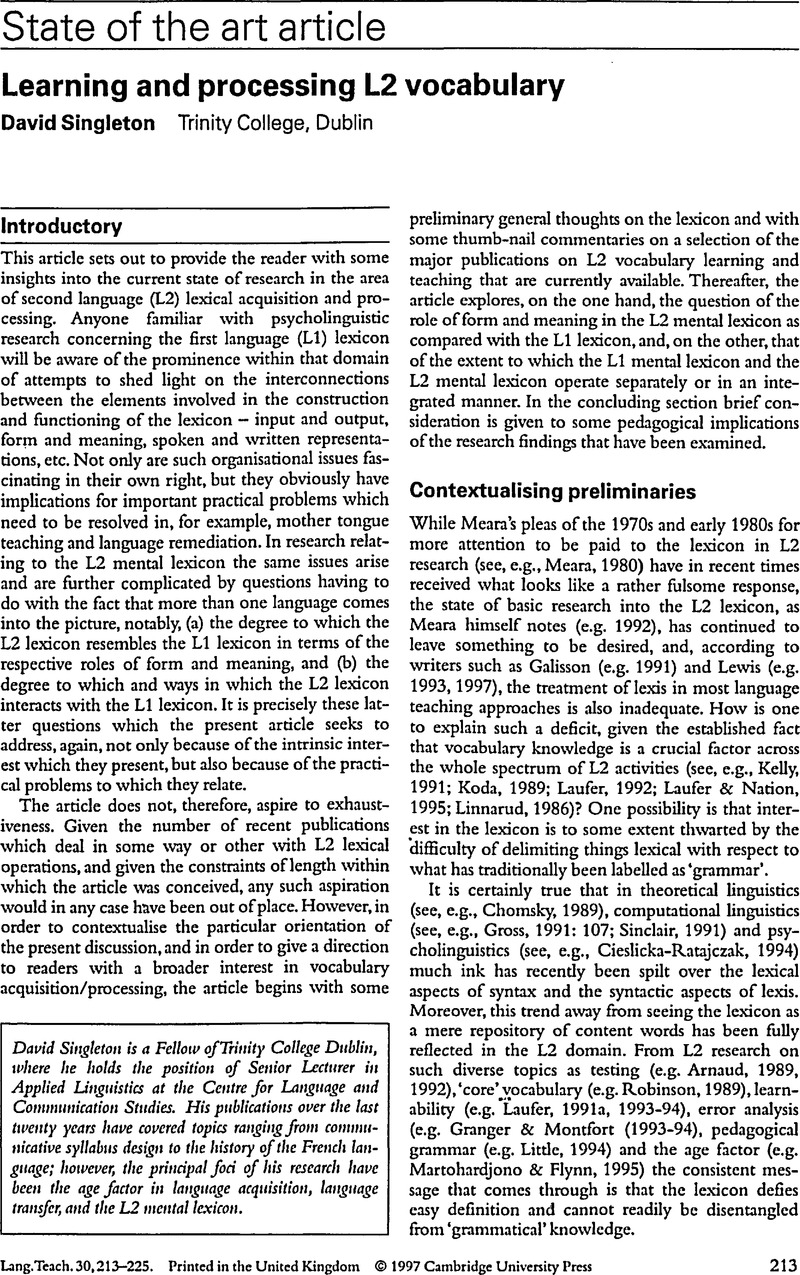Crossref Citations
This article has been cited by the following publications. This list is generated based on data provided by Crossref.
Appel, Christine
and
Mullen, Tony
2000.
Pedagogical considerations for a web-based tandem language learning environment.
Computers & Education,
Vol. 34,
Issue. 3-4,
p.
291.
Cobb, Tom
2000.
One Size Fits All? Francophone Learners and English Vocabulary Tests.
The Canadian Modern Language Review,
Vol. 57,
Issue. 2,
p.
295.
Zahar, Rick
Cobb, Tom
and
Spada, Nina
2001.
Acquiring Vocabulary through Reading: Effects of Frequency and Contextual Richness.
The Canadian Modern Language Review,
Vol. 57,
Issue. 4,
p.
541.
Harwood, Nigel
2002.
Taking a lexical approach to teaching: principles and problems.
International Journal of Applied Linguistics,
Vol. 12,
Issue. 2,
p.
139.
Sánchez, María Jesús
2009.
The Efficacy of Context and Cognitive Expert Patterns in Academic Vocabulary Learning.
ITL - International Journal of Applied Linguistics,
Vol. 158,
Issue. ,
p.
77.
이희정
and
Kyu-Hong Hwang
2014.
The Effects of Corpus-based Instruction on Korean University Students’ Acquisition of English Adjective Synonyms.
The New Korean Journal of English Lnaguage & Literature,
Vol. 56,
Issue. 2,
p.
127.



